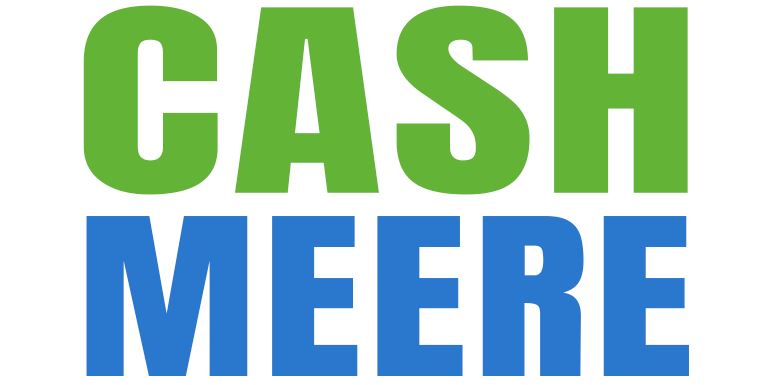When it comes to staying organized, notes apps can be a game-changer. With the rise of digital note-taking, there are now countless apps available to help you keep track of your thoughts, ideas, and to-do lists.
For example, Evernote is a popular app that has been around for over a decade. It allows you to create notes in various formats, including text, audio, and images, and organize them into notebooks and tags. One of the standout features of Evernote is its powerful search function, which allows you to quickly find any note you’ve ever taken. MeisterNote, on the other hand, is a newer app that has gained popularity in recent years. It has a sleek and intuitive interface, and allows you to collaborate with others on notes and projects.
Whether you’re a student, a professional, or just someone who likes to stay organized, note-taking apps can be a valuable tool. In the following sections, we will be diving deeper into some of the best notes apps, exploring their features, pros, and cons, and helping you decide which one is right for you.

Photo by Paul Hanaoka on Unsplash
Overview of Note-Taking Apps
As technology continues to advance, note-taking has become more convenient and efficient. The rise of note-taking apps has revolutionized the way we capture and organize our ideas, thoughts, and information. In this section, we will provide an overview of note-taking apps, including their evolution and benefits.
Evolution of Digital Note-Taking
Digital note-taking has come a long way since its inception. It started with basic word processors, then progressed to note-taking software like Microsoft OneNote and Evernote. Nowadays, there are a plethora of note-taking apps available on various platforms, including desktop, mobile, and web-based applications.
The evolution of digital note-taking has made it easier to capture and organize information. With the advent of cloud technology, note-taking apps have become more accessible and collaborative. Users can now sync their notes across all their devices, share them with others, and work on them in real-time.
Benefits of Using Apps for Notes
Using note-taking apps has several advantages over traditional methods of note-taking. Firstly, note-taking apps are more organized and searchable. Users can easily categorize their notes, tag them, and search for them using keywords. This makes it easier to find specific information quickly.
Secondly, note-taking apps are more convenient. Users can access their notes from anywhere, at any time, and on any device. This means that users can capture their ideas and thoughts as they occur, without having to carry around a physical notebook.
Finally, note-taking apps are more efficient. Users can use templates, checklists, and other tools to streamline their note-taking process. This saves time and ensures that users capture all the necessary information.
In conclusion, note-taking apps have revolutionized the way we capture and organize information. They are more organized, convenient, and efficient than traditional methods of note-taking. As such, they are a valuable tool for anyone looking to improve their productivity and stay organized.
Key Features to Look for in Note-Taking Apps
When it comes to choosing a note-taking app, there are several key features that we believe are essential to consider. In this section, we will discuss these features in detail, including synchronization across devices, rich text formatting, organizational tools, search functionality, collaboration features, and security and privacy.
Synchronization Across Devices
One of the most important features of a note-taking app is the ability to synchronize notes across multiple devices. This means that you can access your notes from your phone, tablet, laptop, or desktop computer, and any changes you make will be automatically updated across all of your devices. This feature is particularly useful for people who work on the go or who need to access their notes from different locations.
Rich Text Formatting
Another important feature to consider is rich text formatting. This allows you to format your notes with bold, italic, underlined text, as well as add images, links, and other multimedia elements. This feature is particularly useful for people who need to create visually appealing and organized notes.
Organizational Tools
Organizational tools are also important when it comes to note-taking apps. These tools can include the ability to create notebooks, tags, and folders, as well as the ability to prioritize and categorize notes. This feature is particularly useful for people who need to keep track of multiple projects or subjects.
Search Functionality
Search functionality is another essential feature to consider. This allows you to quickly and easily find the notes you need by searching for keywords or phrases. This feature is particularly useful for people who have a large number of notes and need to find specific information quickly.
Collaboration Features
If you need to collaborate with others on your notes, then collaboration features are essential. These can include the ability to share notes with others, collaborate in real-time, and leave comments and feedback. This feature is particularly useful for people who work on team projects or need to share notes with others.
Security and Privacy
Finally, security and privacy are important considerations when it comes to note-taking apps. Look for apps that offer end-to-end encryption, two-factor authentication, and other security features to ensure that your notes are safe and secure. This feature is particularly important for people who store sensitive or confidential information in their notes.
In conclusion, when choosing a note-taking app, it is important to consider key features such as synchronization across devices, rich text formatting, organizational tools, search functionality, collaboration features, and security and privacy. By taking these features into account, you can choose an app that meets your needs and helps you stay organized and productive.
Comparative Analysis of Popular Apps
Notion
Notion is a popular app for note-taking that offers a range of features beyond just taking notes. It has a clean and modern interface that makes it easy to use. Notion allows users to create databases, tables, and to-do lists. It also offers templates that can be used to create notes quickly. Its collaboration features are impressive, allowing teams to work together on notes and documents in real-time. However, Notion can be overwhelming for some users due to the number of features it offers…
Evernote
Evernote is one of the most popular note-taking apps, and for good reason. It offers a range of features that make it easy to take and organize notes. Evernote allows users to create notebooks, tags, and to-do lists. It also offers a web clipper that allows users to save articles and web pages for later reading. Evernote’s search function is powerful and allows users to find notes quickly. However, Evernote’s free version has some limitations, and the premium version can be expensive.
OneNote
OneNote is a note-taking app from Microsoft that offers a range of features. It has a simple and easy-to-use interface that makes it easy to take notes. OneNote allows users to create notebooks, sections, and pages. It also offers a range of formatting options, including the ability to add audio and video recordings. OneNote’s integration with Microsoft Office is a plus for users who use Office products regularly. However, OneNote’s mobile app can be slow and buggy.
Bear
Bear is a note-taking app for iOS and macOS that offers a range of features. It has a clean and modern interface that makes it easy to use. Bear allows users to create notes, to-do lists, and tags. It also offers a range of formatting options, including the ability to add images and links. Bear’s search function is powerful and allows users to find notes quickly. However, Bear’s lack of a web app and Android app is a downside for users who use multiple devices.
MeisterNote
MeisterNote is a note-taking app that offers a range of features. It has a clean and modern interface that makes it easy to use. MeisterNote allows users to create notes, to-do lists, and tags. It also offers a range of formatting options, including the ability to add images and links. MeisterNote’s collaboration features are impressive, allowing teams to work together on notes and documents in real-time. However, MeisterNote’s free version has some limitations, and the premium version can be expensive.
Bonus: Google Keep
Google Keep is a simple note-taking app that offers a range of features. It has a clean and modern interface that makes it easy to use. Google Keep allows users to create notes, to-do lists, and reminders. It also offers a range of formatting options, including the ability to add images and links. Google Keep’s integration with other Google products is a plus for users who use Google products regularly. However, Google Keep’s lack of advanced features may be a downside for some users.

Photo by Nick Morrison on Unsplash
How to Choose the Right App for Your Needs
When it comes to choosing the best note-taking app, there are a few things to consider to ensure that you find the right fit for your needs. In this section, we’ll discuss the key factors to keep in mind when selecting an app.
Assessing Your Note-Taking Habits
Before you choose an app, it’s important to assess your note-taking habits. Consider how you typically take notes and what features are essential for your workflow. Do you need to be able to add images and files to your notes? Do you prefer to write by hand or type your notes? Maybe need to be able to organize your notes into categories or folders? By identifying your needs, you can narrow down your options and find an app that offers the features that are most important to you.
Considering Your Device Ecosystem
Another important factor to consider is your device ecosystem. If you primarily use Apple products, for example, you may want to choose an app that is optimized for iOS and macOS. If you use both Android and iOS devices, you may want to choose an app that offers cross-platform compatibility. By selecting an app that works seamlessly with your devices, you can ensure that your notes are always accessible and up-to-date.
Evaluating Cost vs. Features
Finally, it’s important to evaluate the cost of the app versus the features it offers. While some note-taking apps are free, others require a subscription or one-time payment. Consider what features are essential for your workflow and whether the cost of the app is worth it. Keep in mind that some apps may offer a free version with limited features, which can be a good way to test the app before committing to a paid subscription.
By keeping these factors in mind, you can choose the best note-taking app for your needs and ensure that your notes are always organized and accessible.
Tips for Effective Digital Note-Taking
As we dive deeper into the world of digital note-taking, it’s important to keep in mind a few tips that can help us create and maintain effective notes. Here are some suggestions that we’ve found to be helpful:
Creating a Consistent Structure
One of the most important things to keep in mind when taking digital notes is to create a consistent structure. This means that you should use the same format for all of your notes, including headings, subheadings, bullet points, and so on. By doing this, you’ll be able to quickly scan through your notes and find exactly what you’re looking for.
Utilizing Tags and Notebooks
Another great way to organize your digital notes is to utilize tags and notebooks. Tags are essentially keywords that you can assign to your notes, while notebooks are collections of notes that are related to a specific topic. By using both of these features, you’ll be able to quickly find and access your notes, no matter how many you have.
Regularly Reviewing and Updating Notes
Finally, it’s important to regularly review and update your notes. This means that you should take some time each week or month to go through your notes and make sure that they’re still relevant and up-to-date. By doing this, you’ll be able to keep your notes organized and ensure that you’re always working with the most accurate information.
Overall, these tips can help us create and maintain effective digital notes. By following these suggestions, we can ensure that our notes are organized, easy to access, and up-to-date.
Integrating Note-Taking Apps with Other Tools
At times, using a note-taking app alone may not suffice, especially when it comes to managing tasks and scheduling events. Fortunately, most note-taking apps offer integrations with other tools to enhance productivity. In this section, we will discuss some of the ways to integrate note-taking apps with other tools.
Connecting to Calendar Apps
One of the most popular integrations for note-taking apps is with calendar apps. This integration allows you to schedule events and set reminders directly from your notes. For instance, with Evernote, you can connect to Google Calendar, Outlook, and Apple Calendar. Once connected, you can create events and reminders by simply typing them in your notes. The app will automatically detect the date and time and add them to your calendar.
Integrating with Task Management Systems
Another useful integration for note-taking apps is with task management systems. This integration allows you to turn your notes into actionable tasks and track their progress. For instance, with MeisterNote, you can integrate with Trello, Asana, and Todoist. Once connected, you can create tasks and assign them to specific projects directly from your notes. The app will automatically sync the tasks with the task management system, allowing you to track their progress.
Using API for Custom Workflows
For advanced users, note-taking apps offer API integrations that allow you to create custom workflows. This integration allows you to automate repetitive tasks and streamline your workflow. For instance, with Evernote, you can use the API to integrate with Zapier, IFTTT, and Microsoft Power Automate. Once connected, you can create custom workflows that automate tasks such as sending emails, creating tasks, and updating spreadsheets.
In conclusion, integrating note-taking apps with other tools can significantly enhance productivity. With the above integrations, you can schedule events, track tasks, and automate workflows directly from your notes.

Future Trends in Note-Taking Technology
As note-taking technology continues to evolve, we can expect to see several exciting trends in the near future. Here are some of the most promising developments that we anticipate:
1. Artificial Intelligence Integration
Artificial intelligence (AI) is already being used in some note-taking apps to help users organize and categorize their notes. In the future, we can expect to see even more sophisticated AI features, such as voice recognition and natural language processing, that will make note-taking even easier and more intuitive.
2. Enhanced Collaboration
Collaborative note-taking is already possible with many apps, but we expect to see even more advanced collaboration features in the future. This could include real-time editing and commenting, as well as the ability to assign tasks and deadlines to specific notes or sections.
3. Improved Security
As more people rely on note-taking apps to store sensitive information, security will become an even greater concern. We expect to see more robust security features, such as end-to-end encryption and biometric authentication, to ensure that users’ data is kept safe and secure.
4. Integration with Other Apps
Note-taking apps are already being integrated with other productivity tools such as calendars and task managers. In the future, we can expect to see even more integration with other apps, such as email clients and project management software, to create a more seamless and efficient workflow.
___________
Overall, we are excited to see how note-taking technology will continue to evolve and improve in the coming years. With these exciting trends on the horizon, we can expect to see even more powerful and intuitive tools for capturing and organizing our ideas.
What are your favourites? 🙂
